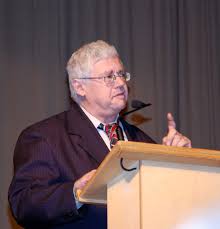Date: 1 December 2015 (Tuesday)
Time: 5.30pm
Venue: Perak Academy, 1 Ground Floor, Jalan Tun Sambanthan, 30000 Ipoh
Registration fee: RM10/= per person
For reservations: Tel 05-2413742, 016-2213742 or Fax 05-2413742
or email: contact@perakacademy.com
SYNOPSIS
The conservation of the natural heritage in Hungary needs a lot of effort. The Carpathian Basin forms a unique physical geographical unit in the heart of Europe. The region owns many natural resources, minerals and springs.
Famous Hungarian National parks, Hortobágy, Aggtelek, Bükk Mountains, Kiskunság, various geological rock formations, karst landforms, underground cave systems, Baradla, Budai Hills, Aggtelek, Szabadság Cave, Beke Cave hydrothermal karst features and UNESCO World Heritages are the most important places for the scholars and scientists.
The Lake Balaton is one of the most beautiful lakes of Europe, which attracts millions of tourists of the World.
Famous Hungarian National parks, Hortobágy, Aggtelek, Bükk Mountains, Kiskunság, various geological rock formations, karst landforms, underground cave systems, Baradla, Budai Hills, Aggtelek, Szabadság Cave, Beke Cave hydrothermal karst features and UNESCO World Heritages are the most important places for the scholars and scientists.
The Hungarian Geographical Museum has the permanent exhibition: Scientific Explorers of the Carparhian Basin. We respect foreign scholars, pioneer scientific explorers, Robert Townson and Francois Beudan whose contributions are very valuable.
ABOUT THE SPEAKER:
Dr Janos Kubassek was born in Budapest in 1957. Having graduated from Steinmetz Miklós Gimnázium (Secondary School) in Budapest he went to the Kossuth Lajos University of Sciences and Arts in Debrecen and took his degree at Faculty of History and Geography in 1982. One year later he received doctor of university degree in József Attila University, Faculty of Natural Sciences, Szeged. He defended his thesis written in the subject of karst morphology with summa cum laude at Professor László Jakucs.
Under Dénes Balázs’s inspiration he had started to research for relics of Hungarian travellers and geographical explorers. He has been the director of the Hungarian Geographical Museum since 1983.
His research fields are History of Geography, History of Hungarian geographers, explorers and travellers, Karst morphology, Speleology, and Regional Geography of Asia and Africa.
He has been a member of committee of the Hungarian Geographical Society since 1983. He is a member of the public body of the Hungarian Academy of Sciences. In 1989 he carried on research work in history of science in London and Oxford. In 1991 he taught in the Korean Republic as a university lecturer. In 1993 he was awarded the Móra Ferenc Prize. In 1996 he was given honorary citizenship of Pest County. The Hungarian Speleological Society awarded him the Kadić Ottokár Medal in 2000. In 2006 he researched as a grantee of Fulbright Scholarship in the Smithsonian Institute and the Library of Congress Washington.
He has participated in and led several scientific expeditions abroad (e.g.: Hungarian Scientific Africa Expedition, 1987‒1988; Northern Ural, Russia, 1990; Gilf Kebir, Egypt, 1993). He has visited 103 countries of six continents. He has been invited to teach at various universities in Hungary and abroad. He has given lectures about Hungarian travellers of the Islamic world in Egypt, Saudi Arabia, and India. He has published 27 books and more than a four hundred studies and articles. His biographical monographies about Alexander Csoma de Kőrös and László Almásy has been published in three editions.


